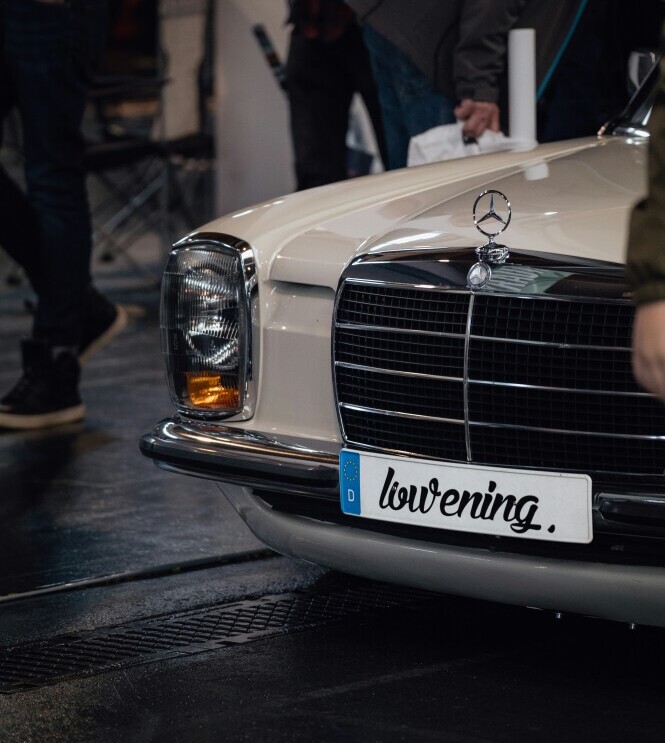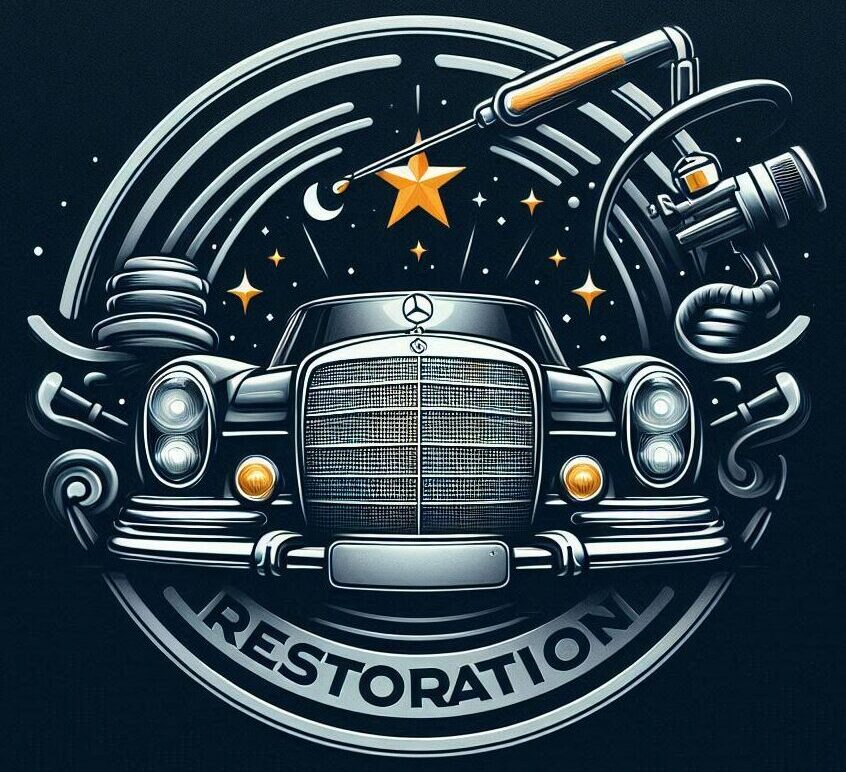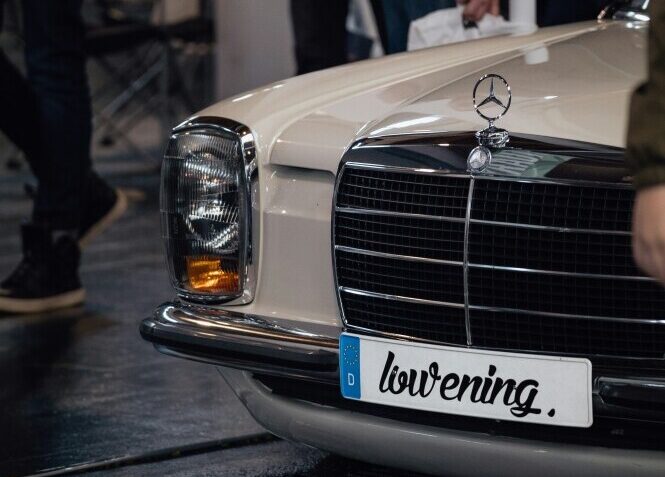
The Mercedes-Benz W114 and W115 models, affectionately known as the “Stroke Eight” (Strich Acht in German), are celebrated for their timeless design, exceptional durability, and innovative engineering. Produced from 1968 to 1976, these cars became icons of reliability and style, making them popular with collectors and classic car enthusiasts today.
Identifying what sets these models apart can be pretty thrilling. The W114 and W115 might look similar at first glance, however the differences are worth noting. The W114 is known for its six-cylinder engines, delivering a smoother, slightly more powerful ride. On the other side, the W115 came equipped with four-cylinder engines, giving it a leaner, more efficient streak.
W114/115 models contributed to Mercedes-Benz’s reputation as a premium luxury brand, amplifying its presence globally.
It’s fascinating how these cars have been woven into the fabric of car culture. They’ve got that nostalgic appeal which collectors and classic car enthusiasts can’t resist.
If you’ve been lucky enough to acquire a W114 or W115—or you’re considering a restoration project—this ultimate restoration guide for the Mercedes-Benz W114/115: 8 Key Steps To Revive This Classic article will walk you through the essential steps to bring this classic car back to its original shape.
Why the Mercedes-Benz W114/115 Is Worth Restoring
The W114/115 series offered a variety of models, from the elegant 250C coupe to the robust 240D diesel sedan. Known for their excellent build quality, these cars can last for decades with proper care. Their robust mechanics and readily available parts make them an ideal choice for first-time and seasoned restorers.
These steps will help you achieve your restoration goals, whether you’re restoring for personal enjoyment or to showcase at car events.
Step 1: Start with a Thorough Assessment
Understanding the current condition of your W114/115 is the first step to planning your restoration. This will help you identify key problem areas, set a budget, and create a realistic timeline.
What to Do: Inspect the car for rust, body damage, and mechanical wear. Pay special attention to common rust-prone areas, such as the floor pans, rocker panels, wheel arches, and trunk floor. Evaluate the engine and transmission and check for any electrical issues. If you lack confidence in your assessment skills, hire a professional mechanic or classic car specialist.
Resources:
- Inspection Guide: Use Hagerty’s Classic Car Inspection Checklist to guide your evaluation.
- Local Mechanics: Find a professional inspection service through Yelp.
Step 2: Set Clear Restoration Goals
Having a clear vision for your restoration will keep you focused and help you avoid unnecessary expenses.
What to Do: Decide whether you want a complete, factory-original restoration or a partial refresh with modern upgrades. For example, while purists aim to keep everything authentic, others may opt for modernized brakes or suspension to improve drivability.
Practical Tip: Write down your goals, whether it’s showcasing the car at classic car shows, driving it regularly, or preserving it as an investment.
Resources:
- Restoration Inspiration: Browse restoration stories and ideas on Hemmings.
- Classic Car Communities: Join the Mercedes-Benz Club of America to connect with other W114/115 owners.
Step 3: Plan Your Budget
Restoration projects can get expensive. A well-planned budget ensures you can complete the project without financial surprises.
What to Do: Break your budget into categories: bodywork, mechanical repairs, interior restoration, paint, and parts. Add a buffer (about 10–20%) for unexpected expenses, which are common in restoration projects.
Resources:
- Budget Planner: Classic Car Restoration Club provides templates for planning your restoration budget.
- Parts Pricing: Check FCP Euro and RockAuto for an idea of parts costs.
Step 4: Address Rust and Bodywork
Rust is a common issue in vintage cars like the W114/115 and must be addressed early in the restoration process.
What to Do: Inspect for rust in common trouble areas and remove it using sandblasting or chemical treatments. For severe damage, you may need to replace entire panels. If extensive welding is required, work with a professional body shop. Once repairs are complete, apply a rust inhibitor and primer to protect the metal.
Resources:
- Rust Treatment Supplies: Eastwood offers rust removers and sealants for classic cars.
- Body Shops: Use Yelp to find experienced classic car body shops near you.
Step 5: Restore or Upgrade the Mechanical Components
The engine, transmission, and suspension are the heart of your car’s performance. Restoring these ensures your W114/115 is roadworthy and reliable.
What to Do:
- Engine: Rebuild or refresh the engine, replacing worn components like pistons, gaskets, and timing chains.
- Suspension: Inspect bushings, shocks, and springs. Replace any worn parts to restore smooth handling.
- Brakes: Consider upgrading to modern disc brakes if your car still has older drum brakes.
Resources:
- Engine Rebuild Kits: Find kits and components at Summit Racing.
- Suspension and Brakes: FCP Euro offers parts for W114/115 models.
Step 6: Restore the Interior
The interior of the W114/115 reflects its mid-century charm. Restoring it enhances the car’s value and makes driving a pleasure.
What to Do: Check the seats, dashboard, carpets, and door panels. If the original upholstery is intact but worn, use leather or vinyl conditioners to restore it. For heavily damaged interiors, consider professional reupholstering. Polish or refinish wood trim, and replace broken or faded switches and gauges.
Resources:
- Upholstery Kits: Automotive Interiors offers kits for vintage cars.
- Leather Restoration: Leatherique provides products to restore and maintain classic car interiors.
Step 7: Choose the Right Paint and Finishing Touches
A high-quality paint job brings your restoration together, making the car look as good as it performs.
What to Do: Choose a paint colour that matches the original factory options for your W114/115. A professional paint shop is recommended for achieving a smooth, even finish. Once painted, add finishing touches, like polishing the chrome trim, replacing emblems, and cleaning the glass.
Resources:
- Automotive Paint Options: PPG Paints provides classic Mercedes paint codes and supplies.
- Trim and Badges: Find authentic replacement parts on eBay Motors.
Step 8: Test, Tune, and Enjoy
The final step ensures your car is ready to drive and performs as expected.
What to Do: Test all systems, including the engine, brakes, and electrical components. Take the car for a short drive to check for any issues, such as alignment problems or unusual noises. Fine-tune the engine and suspension as needed. Once you’re satisfied, take your W114/115 out for a longer drive to truly enjoy the results of your hard work.
Resources:
- Diagnostic Tools: AutoZone sells tools for testing and tuning classic car engines.
- Mechanic Assistance: For final adjustments, consult a classic car specialist through Autozone.
Restoring a Mercedes-Benz W114/115 is a rewarding journey that combines the joy of working on a classic car with the satisfaction of preserving a piece of automotive history. With its timeless design, reliable engineering, and strong community of enthusiasts, the W114/115 is a model worth every effort.
Following this step-by-step guide and using the resources provided can confidently bring your W114/115 back to life. Whether you’re restoring it for personal use, showcasing it at events, or preserving it as an investment, this classic Mercedes will surely reward you with its charm and character. Happy restoring!
Distinguishing Features: W114 vs. W115
The W114 and W115 models might seem like peas in a pod, but there’s more than meets the eye. Let’s break down what sets these siblings apart in the Mercedes-Benz lineup. While both share a similar aesthetic defined by sleek lines and a robust build, it’s under the hood where the real differences start to show.
The W114 typically boasts a six-cylinder engine, making it the go-to if you’re after that classic Mercedes power. This model is known for offering a refined and somewhat powerful driving experience, which was particularly appealing for those who enjoyed a bit more ‘oomph’ in their luxury ride. Meanwhile, the W115 prefers a more measured approach with its four-cylinder engine, highlighting efficiency and reliability over raw power.
Regarding design nuances, the W114 often featured more elaborate trims and luxury features, aligning with its slightly upscale positioning compared to the W115. These differences might seem minor on paper, but they gave the W114 a subtly distinct personality that’s quite special. On the other hand, the W115, often seen as the more practical choice, earned a reputation for durability, especially favourable in markets that valued longevity and lower fuel consumption.
Another point of distinction is their role across various markets. W115 models gained popularity in commercial sectors – think durable taxis in that iconic mustard yellow – while W114 sedans often found homes in private garages that were cherished as personal luxury vehicles.
Clearing up common misconceptions is crucial. It’s easy to think of the W114 as just a fancier version of the W115, but in reality, each model served different consumer needs and preferences. Both hold their fascinating charm. Whether it’s the luxurious appeal of a W114 or the trusted efficiency of a W115, knowing their unique attributes helps any enthusiast appreciate them even more.
Performance Showcase: Power and Speed of the W114
Exploring the performance of the Mercedes-Benz W114 reveals why these classics have stood the test of time in enthusiasts’ hearts. The W114 models come equipped with six-cylinder engines, with horsepower often varying based on specific configurations and markets. Typically, a W114 can boast between 120 to 185 horsepower, depending on its engine variant, which was quite an achievement back in these days.
In the real world, these numbers translate to a driving experience that balances smooth cruising and the satisfying growl of a well-crafted engine. For those new to the classic car scene, it’s important to remember these aren’t turbocharged rockets; they’re more about enjoyable, spirited drives—perfect for a nostalgic Sunday afternoon.
Speaking of numbers, what’s the top speed? The Mercedes W114 can reach a maximum speed of around 110 to 120 miles per hour. It is quite respectable for its time, but nothing compares to the joy of handling one of these on a twisty back road, where its superb engineering makes every drive memorable.
It’s intriguing to compare the W114’s performance against today’s modern cars. Sure, modern sedans might outshine it in terms of tech and speed, but they often lack the character and charm that comes naturally with driving a W114. It’s not always about how fast you can go, but how exhilarating the ride feels.
Keeping performance at its peak means adopting a regular maintenance routine—like a well-oiled machine, literally. Simple things like regular oil changes, checking the coolant, and routine check-ups can ensure your W114 runs like it should.

